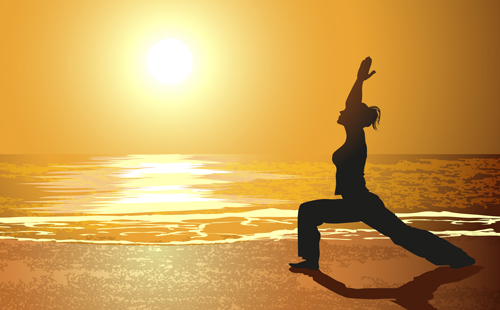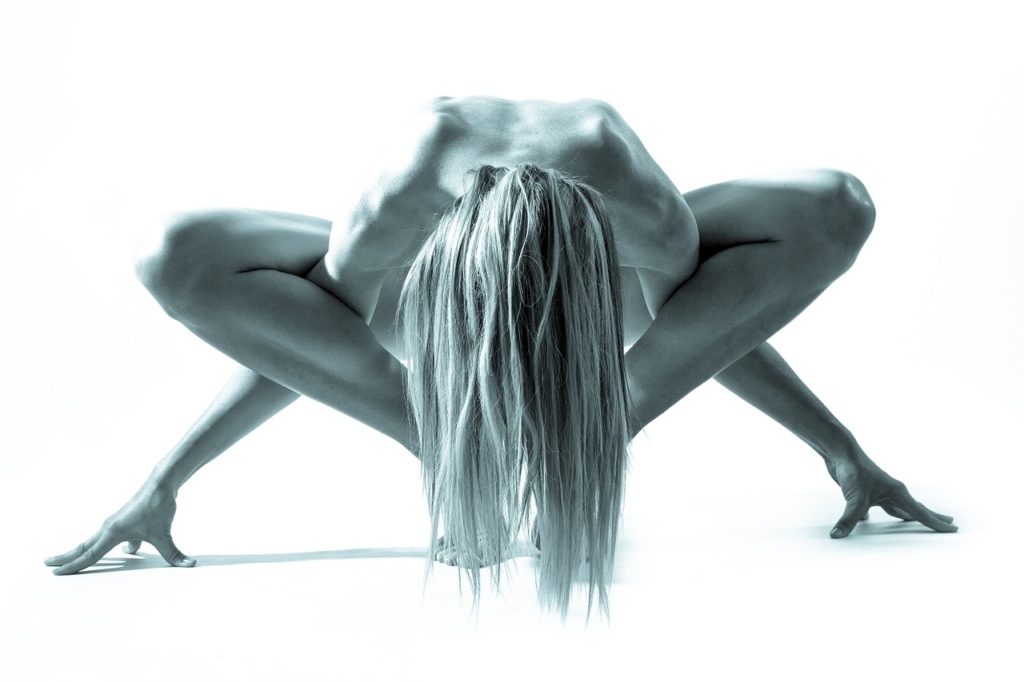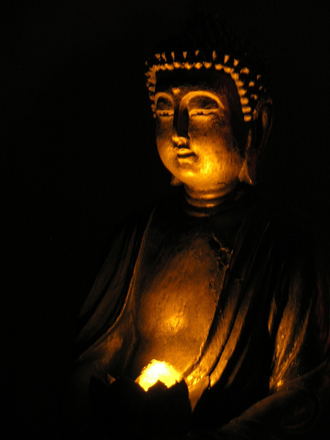Why Yoga? What are types of Yoga and is Guru needed?

.
You might have good strength, cardio programs and also taking care of your diet but how much you working on your flexibility and balance? Is your heavy exercises making you feel requiring more food, more sleep and impact your work? The answers to all this is YOGA, which will not only provide you with enough strength, flexibility, weight control, agility etc but also improves your mental capacity and leaves you every time more rejuvenated. Since your muscles & joints are more flexible and your weight is under control, one could think of a comparatively much better condition when grow Old, plus Yoga philosophy make sure that you stay as disease free as possible, Indian Yoga gurus in old times were known for a healthy and long lives even upto 100-150yrs often.
What is Yoga?
Yoga means “union” in Sanskrit, and refers to the original purpose of the practice- connecting mind and body so you can experience your true self, get connected to your higher self and find enlightenment. Yoga is a basic means to your fulfillment where you’re looking to be healthy physically or want to grow spiritually, its practices & philosophy will help you in keeping your physical body healthy, mentally & emotionally much better and stable as you would be able to concentrate and control yourself better, and last but not least you can sit for longer duration in while working or meditating.
How to do Yoga ?
Fine, so Yoga is a wonderful thing, perhaps we all know and that’s the reason there is a Yoga international day as well, and Yoga Alliances are set up to recognize yoga education. But when you want to do Yoga, its very easy to get confused with so many style, whether you took yoga to improve health or as a career. While its good because different styles are more aligned towards different benefit or comfort but still confusing. Since most of Yoga teachers specialize in one or 2 forms of Yoga, except those who devoted their life to yoga, its very common for them to talk good about their style of yoga and claim its best, that makes it more confusing to decide what kind of yoga to go for. There are traditional Yoga like Hatha which sees Yoga as a complete system and postures are a small part of it, while new modified version of yoga like Vinayasa connects yoga more to postures or asanas and the goal is physical fitness or at worst acrobats through body twisting, then also new untraditional practices came up like Aerial Yoga or Nude or Tantrum Yoga (I’ll cover unusual types of Yoga in a later blog). Most of ads, especially in western side, will show a really twisted body which make me think whether its yoga or acrobat because yoga is about a lifestyle and not just twisting the body. Does a better twisted body mean a better teacher, certainly NO!
Yoga is becoming a billion dollar industry, where a 4 week Teacher training costs you from $1000 to $8000, marketing skills are use very often with trick photography and technology stuffs to sell yoga. So being misled is normal. But yes! you want to learn Yoga, you want to adopt a lifestyle which make you grow stronger, which not only keep your body healthy but also keep your emotional & mental side healthy, which gives you more energy to do your daily work unlike hardcore gyms which saps brain energy to impact your creativity to some extent after a level.
Yoga style or types:
So with all these, I though to dedicate a blog to understand the different types of Yoga. Most styles of yoga are based on the same basic yoga poses (called asanas). However due to its wide application on our body, mind and spiritual side, the experience of one style can be radically different than another. Its not a one-size-fits-all kind of practice, different kind of people have different requirements or better say priorities hence different forms of Yoga came into existence and its important to know what style is best for you. So lets have a look at different types of Yoga so you can decide which one will suit you, from a completely unbiased point of view. So lets start to understand different types of Yoga, their origin, application and to whom they’re best suited.

Gentle
-
- Hatha Yoga :
The Sanskrit term “hatha” actually refers to any yoga that teaches physical postures. The syllable ‘ha’ denotes the pranic (vital) force governing the physical body and ‘tha’ denotes the chitta (mental) force thus making Hatha Yoga a catalyst to an awakening of the two energies that govern our lives. “It’s a practice of the body, a physical practice that balances these two energies. Hatha is a general category that includes most yoga styles. It is an old system that includes asana (postures) along with the six shatkarmas (physical and mental detox techniques), mudras and bandhas (psycho-physiological energy release techniques) and Pranayama (pranic awakening practices), preparing the body for deeper spiritual practices such as meditation. It’s a slower moving classes that require to hold each pose for a few breaths.
Best for: Beginners. Because of its slower pace and relaxed style that require holding poses longer, Hatha is a great class if you’re just starting your yoga practice.
-
- Sivananda Yoga :
Based on the teachings of Swami Sivananda, this yoga style has stuck to its classical roots, offering a pure type of practice that is slow, gentle and thorough. Sivananda Yoga focuses on five fundamental points of yoga- proper exercise, proper breathing, proper relaxation (Corpse Pose), proper diet (vegetarianism), and positive thinking and meditation. Each 90-minute class focuses on 12 core poses and Sanskrit chanting, pranayama practices, meditation, and relaxation. It is designed to transform and elevate human consciousness, and is overall more spiritual practice than mere exercise. You do 13 poses and lie down in between the poses. Sivananda yoga is easily adaptable to people of different physical abilities.
Teachers and Centers: Sivananda Yoga was founded in 1957 by Swami Vishnu-devananda (1927-1993), a primary student of Swami Sivananda (1887-1963).
-
- Iyengar Yoga :
Its about doing only a few poses while exploring the subtle actions required to master proper alignment. Poses can be modified with props, each posture is held for a period of time. It’s good to start with a level one class to familiarize yourself with the technique when you’re new to Iyengar, even if you’ve practiced other types of yoga.
For beginners, the primary objective is to understand the alignment and basic structure of the poses, and to gain greater physical awareness, strength, and flexibility.
Best for: anyone with neck or back problem. If you like to go into details or know about anatomy, movement and form, you’ll love Iyengar style. Iyengar can also be practiced at any age and is great for people with any injury or with neck or back problems.
Teacher: B.K.S. Iyengar founded this style. His children Gita and Prashant Iyengar teach in Pune, India, and around the world. Iyengar and ashtanga yoga come from the same lineage – the teachers who developed these styles (BKS Iyengar and the late Pattabhi Jois) were both taught by Tirumalai Krishnamacharya. Many of the asanas (postures) are the same, but the approach is different.
-
- Kripalu Yoga :
The primary objective is to awaken the flow of prana, the natural life force that will enable you to thrive in all aspects of life. You’ll discover how well a pose or decision is effective by observing body & mind, using asana, pranayama, meditation, and relaxation techniques. Classes can be physically demanding or extremely gentle, such as chair yoga.
Teacher: Swami Kripalu (1913-1981) was a Kundalini Yoga master who taught that all the world’s wisdom traditions stem from a single universal truth, which each of us can experience directly. The main center is the Kripalu Center for Yoga & Health in Stockbridge, Massachusetts.
-
- ViniYoga :
Viniyoga is a Sanskrit word that “detachment”, and the root viniyuj means “to employ”. Indian yoga teacher Tirumalai Krishnamacharya developed this individualized yoga style. Viniyoga is a comprehensive teachings of yoga including asana, pranayama, bandha, sound, chanting, meditation, personal ritual and study of texts. You focus on how your breath moves through your body and affects each pose, It’s not so much about doing poses precisely. It adapts various means and methods to create a personalized practice that is right for an individual physically, emotionally and spiritually taking into account their age, gender, interests, goals, potential and physical condition etc. The long, deep stretches of this style of yoga are ideal for beginners and people who want to focus on flexibility, recovery from injury, body awareness, and relaxation.
Challenging
-
- Ashtanga Yoga :
Ashtanga Yoga is traditionally taught in Mysore-style, which allow students to work at their own pace and to be assessed by senior instructors. The basis of ashtanga yoga is the Yoga sutras (Sanskrit Verses) of Patanjali. It is typically fast-paced, vigorous and physically challenging yoga that led you non-stop from poses to poses, around 75 poses in 90-120 mints, while encouraging breathing. There are six series in total, increasing in difficulty as you move from the primary series on, each series is a set sequence of asanas, always in the same order.
The practice is smooth and uninterrupted, so the practitioner learns to observe whatever arises without holding on to it or rejecting it. With continued practice, this skill of attentive nonattachment spills over into all aspects of life. This is one important meaning of K. Pattabhi Jois’s famous saying, “Practice, and all is coming.”
Best for: Type-A folks. If you’re a perfectionist, you’ll like Ashtanga’s routine and strict guidelines, where same Yoga poses are done in same sequence in each class.
Teachers: Founded by K. Pattabhi Jois (1915-2009), this system is taught around the world. Jois’s grandson R. Sharath now leads the Shri K. Pattabhi Jois Ashtanga Yoga Institute in Mysore, India. There are teachers everywhere around the globe.
-
- Bikram Yoga :
IT is practiced in warm environment believing that the heat will loosen the muscles increasing the stretching ability. Classes consist of 45 minutes of standing poses and 45 minutes of floor postures. You do the same series of two breathing exercises and 26 poses in each class. All Bikram studios practice the same 90-minute sequence so you’ll know exactly what to do once you unroll your mat.This practice is designed to work your body and requires full mental concentration. The overall objective is to create a fit body and mind, allowing the physical self to unify with the spiritual self.
Bikram Yoga is best for Amateurs. Those who are newer to yoga might like Bikram because of its predictable sequence.
Teacher: Bikram Choudhury was born in Calcutta and introduced his system in the United States in 1971. His main teacher was Bishnu Ghosh (1903-1970). To mimic the climate in Choudhury’s hometown in northern India, studios are heated to a sauna like 105 degrees Fahrenheit, with a 40 percent humidity level.
-
- Hot Yoga :
Hot yoga is similar to Bikram in that it’s practiced in a heated room. But teachers aren’t constrained by the 26-pose Bikram sequence. While the heat will make you feel like you can move deeper into some poses compared to a non-heated class, it can be easy to overstretch, so don’t push beyond your capacity.
This is best for hardcore sweat lovers. If you love a tough workout that will leave you drenched, sign up for a beginner-friendly heated class.
-
- Power Yoga :
Power yoga is used to describe a vigorous, vinyasa-style yoga. It originally closely resembled ashtanga and was an attempt to make ashtanga yoga more accessible to Western students. It differs, however, in that it is not a set series of poses, but rather allows the instructor freedom to teach what they want.
Two American yoga teachers, Beryl Bender Birch and Bryan Kest, both of whom studied with Sri K. Pattabhi Jois, are most often credited with inventing power yoga. Power yoga’s popularity has spread around the world and is now taught in most studios. Because the style can vary, it is recommended that you consult with the studio or individual instructor before attending a class.
Spiritual
-
- Kundalini Yoga :
This system of Yoga is concerned with awakening of the 7 Chakras or psychic centers. A 90-minute class typically begins with chanting and ends with singing, and in between features asana, pranayama, and meditation designed to create a specific outcome. It involves asanas, pranayama, mantra, mudra and bandha and other forms of Yoga with deep concentration on Chakras to stimulate the awakening. You can also find challenging breathing exercises, vigorous movement-oriented postures, often repeated for minutes, that will push you towards your limit.
Kundalini Yoga is sometimes called the Yoga of Awareness. The primary goal is to awaken kundalini energy, the psychoenergetic force that leads to spiritual elevation, and kick-start the process of transformation. The average session are almost made up of 50% exercise, 20% breath work, 20% meditation, and 10% relaxation.
Teachers and Centers: Kundalini Yoga was founded in the United States in 1969 by Yogi Bhajan.
-
- Mantra Yoga :
MAN + TRA – Mantra is a Sanskrit word made up of two verbs, Man & Tra which in sanskrit “Mananat Trayate”, just by chanting one can save himself in the universe that is achieve the ultimate in this material world. Mantra Yoga is a easiest way to achieve difficult state of Pratyahara, that is Internalizing the sense oriented mind from external world and focus on inner consciousness. It includes effective sound therapy.
These are some main, very beneficial and well known types of yoga. But then there are many other less known or not-normal kind of Yoga, means you cannot just go and practice, its either focused to a purpose like prenatal or you need to do some thinking before joining like in Nude Yoga. In our next blog, we would address other types of Yoga and few unusual types of Yoga as well.
Thanks for being with me. Hope this would be helpful. Let me know your thoughts, that’ll really motivate me to keep writing and make it more useful for everyone involved.
Please feel free to reach out to me if you’ve any questions, thoughts to share or need any help, using Contact-form or Mail me at- info@shikti.com or drsantkj@gmail.com , or connect at – (91) 6363375125
Bless & Light – Shikti Team




whoah this blog is great i love reading your articles. Keep up the good work! You know, many people are hunting around for this info, you can aid them greatly.
I gotta bookmark this website it seems handy extremely helpful Rhianna Thorsten Faruq
Magnificent beat ! I wish to apprentice while you amend your website, how could i subscribe for a blog site? The account helped me a acceptable deal. I had been tiny bit acquainted of this your broadcast provided bright clear concept Adorne Edan Zebulon
Fine way of describing, and pleasant paragraph to get facts regarding my presentation focus, which i am going to deliver in school.| Gussi Correy Eiten
You made some clear points there. I looked on the internet for the subject and found most persons will approve with your blog. Joana Nester Indihar
I want to encourage you to continue your great job, have a nice weekend! Vevay Lancelot Vivienne